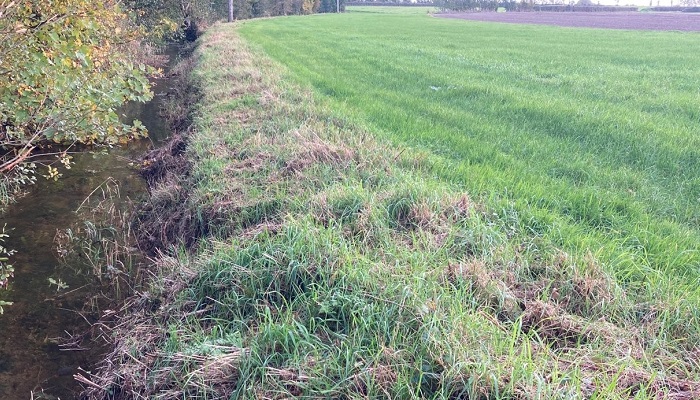01 February 2024
Buffer strips and tillage farming – the benefits and regulatory requirements

All farmers have a role in the protection of water from nutrients and pesticides, writes Ciaran Collins, Teagasc Crops Specialist, and in a tillage context, one of the primary ways we can protect water is by the establishment of buffer strips along water courses.
Buffer strips are a statuary requirement under the Nitrates Directive and are also part of conditionality under the BISS payment scheme.
A buffer strip is an area of land next to a water feature where certain agricultural activities are prohibited. The width of the buffer strip varies depending on the agricultural activity, but the minimum buffer strip is 3m.
The objective of buffer strips is to prevent nutrients and pesticides from entering water. The risk of nutrients entering the water depends on a number of factors but soil type, weather and farm practice are key factors involved. While we don’t have any control over the type of soil we farm or the weather, we can alter our farm practice to help reduce the risk of nutrients entering the water.
Nitrate leaching is one of the major issues on light, free-draining soils typically used in crop production. Nitrogen does not bind tightly to the soil and is susceptible to leaching when excess nitrogen is applied – especially after heavy rainfall.
Phosphorous is most prone to loss from low permeability clay soils or soils which are peaty in nature. This loss occurs through overland flow of water which carries sediment and P into drains and surface waters. When we see ‘brown water’ flowing into a watercourse following heavy rain, this normally contains high levels of phosphorous.
Buffer strips are a way of breaking the pathway of nutrients by slowing water runoff, trapping sediment and enhancing infiltration of the soil.
The table below contains some of the key buffers for tillage farmers, but some buffers can be larger such as buffer zones for spreading organic manures near water abstraction points.
The minimum buffer requirement next to water for tillage farmers is a 3m uncultivated margin. The definition of ‘waters’ where buffers are required in GAEC 4 is: ‘Waters’ are all surface waters, including coastal water, estuaries, lakes, ponds, rivers, streams, canals and watercourses such as field ditches / drains, including temporarily dry drains (dry for more than 3 months of the year).
Table 1: Some of the key buffers for tillage farmers
| Area | Buffer strip width |
|---|---|
| Uncultivated margin required along watercourses where the adjacent crop to be established is not a grass crop | 3m |
| Untreated margin required from the surface water edge when chemical fertiliser products or plant protection products are being applied to the adjacent crop | 3m |
| Grass/ vegetated margin required from the surface water edge where the adjacent crop is a non-grass forage crop grazed in-situ | 4m |
| Spreading of organic manure | 5m |
| Uncultivated buffer required to protect any intersecting watercourses where the adjacent crop is a late harvested crop. Eg maize, beet, potatoes etc. | 6m |
Further details on the buffer zones for spreading organic manures near water abstraction points is available here.
